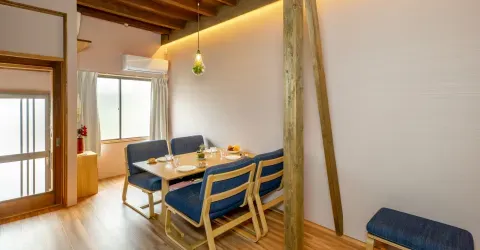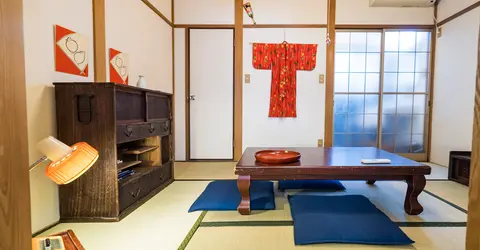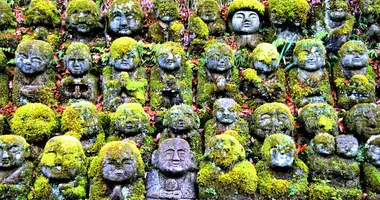Tofukuji 東福寺
Located in the south-east of Kyoto, Tofukuji is a large open temple complex, with 23 sub temples. The temple is famous for its stone and moss gardens and has the largest Zen temple gate in Japan. It takes its name from Todaiji and Kofukuji in Nara.
Tofukuji Temple
History
Tofukuji Temple is a massive religious complex that was founded in 1236 and built in the ensuing decades. Tofukuji Temple has been plagued by fire on many occasions: Tofukuji Temple was destroyed in 1319, 1334, and 1336, and burned again in the 15th century.
Tofukuji takes its name from a combination of the Todaiji and Kofukuji temples in Nara - the great founding temples of Japanese Buddhism that were so influential in the flourishing of the religion.
Zen Temples of Kyoto
It has since come to be known as one of the Great Zen Temples of Kyoto; the others are Kenninji, Manjuji, Nanzenji, Shokokuji, and Tenryuji.
Gardens & Gate
The temple is best known for its massive gate - at 22 meters it is the largest in any Japanese Zen temple - and its Zen gardens within the Hojo (Abbot's Hall).
The gate was built in 1425 - then taken apart, fixed, and rebuilt in the 1970s. The stone Zen gardens surround the Abbot's Hall on all four sides and each is different in character and design. The gardens are named from the cardinal points thus: northern garden, eastern garden, southern garden and western garden.
The garden by Mirei Shigemori (1896-1975) features a stone zen garden, and, in the rear, a moss garden. Tofukuji Temple is especially beautiful in the fall and is also known for its azaleas and hydrangeas in summer.
The upper floor of the great gate holds a number of Buddhist statues dating from the Heian Period and thought to have been created by Jocho, a noted sculptor. The ceiling of the Sammon is decorated with paintings by Mincho (aka Cho Densu 1352-1431) and his disciple Kandensu.
Main Hall
The Main Hall (Hondo) was rebuilt in 1932 and the ceiling painting of a dragon is by Insho Domoto. Tofukuji owns many rare paintings by artists such as Sesshu (1420-1506) and Kichizan Mincho aka Cho Densu (1352-1431). A huge 11.9m x 7.9m scroll by Mincho depicting the Buddha's Entry into Nirvana is shown to the public annually on March 15.
The beautiful grounds have some beautiful maples in autumn and are known for their hydrangea in summer. A small stream, known as Sengyokukan runs through the garden traversed by three bridges, the most famous of which is the Tsuten Bridge, which features in a ukiyoe by the artist Hiroshige.
The garden (shown in the photograph below) around the Hojo (Main Hall) is the work of Mirai Shigemori (1896-1975) who installed them in 1939 using mostly moss and gravel to complete a beautiful whole.
This garden at Tofukuji was Mirai's first major project and he went on to design over 200 gardens including Matsuo Taisha, Sumiyoshi Shrine, Kishiwada-jo and Zuiho-in, a sub-temple of Daitokuji.
The sub-temple Sesshuji (Funda-in) contains another famous rock garden attributed to the painter Sesshu called tsurukame-no-niwa - the crane and tortoise garden as the rocks depict these two creatures. Sesshu's most famous garden is in Yamaguchi.
Tofukuji is the headquarters of the Tofukuji school of the Rinzai sect of Japanese Buddhism.
Nearby
A visit to Tofukuji Temple can be combined with seeing nearby Fushimi-Inari, Fushi-Momoyama Castle and the Gekkeikan Sake Museum. Fushimi-Inari Taisha is also on the Keihan Line two stops south towards Nara and one stop on the JR Nara Line.
Address, timetable & access
Tofukuji Temple
Address
15-778 Honmachi, Higashiyama-ku
605-0981
Japan
Phone
+81 (0)75 561 0087Timetable
Daily 8.30 a.m to 4 p.m.Price
400 yen for adults (to sub temples).Access
Tofukuji Station on the JR Nara Line, which can be accessed from Kyoto Station. Tofukuji Station on bus linesn°202, 208 and 207.Website
http://www.tofukuji.jp/english/index.html































